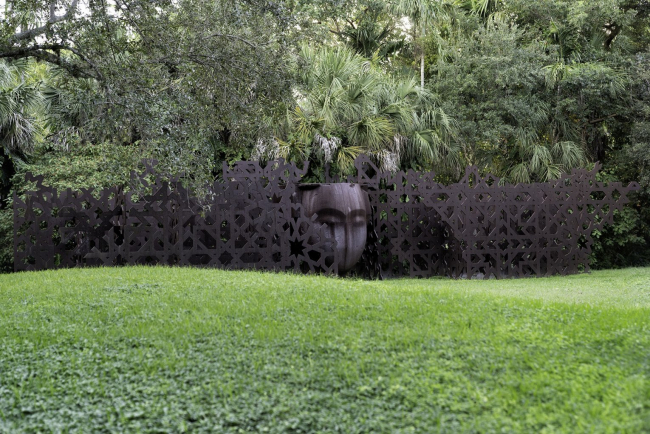Descripción de la Exposición
Miquel Salom: The Tintype in the Twenty-First Century
Text By: Tomas Lopez, Art and Art History Professor, UM
Miquel Salom is a self-described “alumitypist.” His is a complicated and methodical practice, employing hand-applied collodion emulsion on aluminum plates, which are then exposed to a narrow spectrum of light in a large format camera, and developed on site. Even undertaken with great care, chance and chaos haunt the process. Success results in the creation of both an image and a unique object. Though the process and the resulting work of art seem exotic to us now, novelty is not Salom’s ambition. For him, photography is about finding great beauty in the ordinary, and honing his vision. In the understated work of Miquel Salom, the image transcends its method of recording and becomes visual poetry.
The curatorial vision that paired Miquel Salom with Manolo Valdes began with the uses of history in both artists’ work. The historical roots of Salom’s collodion plates echo the many references to art history in Valdes’ sculpture. Valdes is a twenty-first century artist who finds the modernist scaffolding in a seventeenth century master, just as Salom is inspired to revisit a very early photographic process. Both artists work with metal; both, in this exhibition, are engaged with landscape in a meaningful way. As the curator, Marcelo Llobell said, “It’s a heady trip in time from the past to the present and back - both in materials and themes.”
Walter Benjamin proposed that “even the most perfect reproduction of a work of art is lacking in one element: its presence in time and space, its unique existence at the place where it happens to be.” The aura of a work is its effect of being uniquely present in time and space. With this collaboration, Miquel Salom has created unique, auratic objects that take as their subject other auratic objects—a heady trip indeed.
The collodion process is an early photographic process. The collodion process, mostly synonymous with the "collodion wet plate process", requires the photographic material to be coated, sensitized, exposed and developed within the span of about fifteen minutes, necessitating a portable darkroom for use in the field. Collodion is normally used in its wet form, but can also be used in dry form, at the cost of greatly increased exposure time. The latter made the dry form unsuitable for the usual portraiture work of most professional photographers of the 19th century. The use of the dry form was therefore mostly confined to landscape photography and other special applications where minutes-long exposure times were tolerable.

Exposición. 05 dic de 2020 - 30 jun de 2021 / Varios parques de Doral / Doral, Florida, Estados Unidos

Formación. 08 may de 2025 - 17 may de 2025 / Museo Nacional Centro de Arte Reina Sofía (MNCARS) / Madrid, España